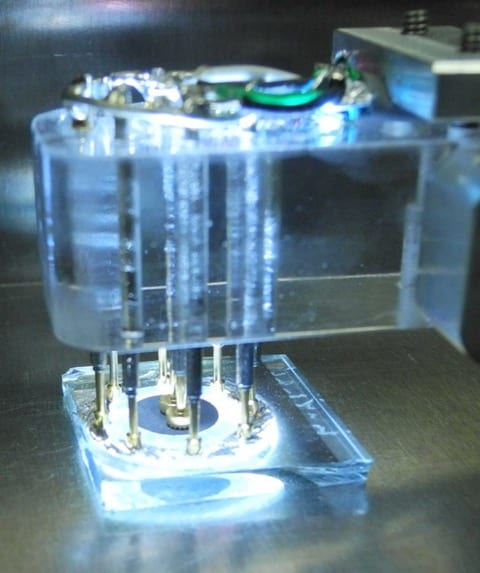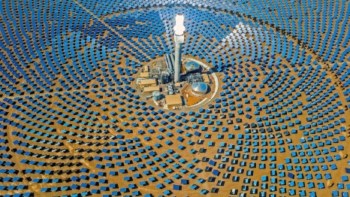
Photovoltaic cells made from cadmium telluride (CdTe) – already widely used in solar energy generation – also excel at harvesting ambient light indoors, making them an excellent energy source for the fast-growing Internet of Things (IoT). This is the finding of researchers at the Massachusetts Institute of Technology (MIT) in the US and the Tyndall National Institute at the University of Cork, Ireland, who fabricated low-cost CdTe cells and measured their photovoltaic response when exposed to light from various sources, including LED bulbs.
At present, indoor IoT devices such as wireless sensors are typically powered by batteries. However, study lead author Ian Mathews says that photovoltaic cells would be better because of they require less maintenance and are cheaper and easier to make. In his view, these characteristics present a “significant market opportunity” for CdTe cells in particular, yet researchers have rarely tested their effectiveness at converting ambient light (from incandescent, compact fluorescence or LED bulbs, for example) into electrical energy. Instead, previous studies of indoor-light energy generation have mainly focused on rival photovoltaic technologies, such as silicon, III-V semiconductors, organic PV devices and perovskite materials.
CdTe has several advantages over its competitors in this respect. For one, its 1.4 eV electronic bandgap is a better match for typical indoor light spectra than silicon’s, meaning that it effectively absorbs low-level diffuse light from sources commonly employed to light homes and offices. Second, it is both cheaper and more stable than perovskite and organic PV materials. Finally, the processes required to manufacture it are relatively simple and rapid (10 times faster than traditional silicon-based technologies), and – thanks to years of commercialization for solar energy – well-established and optimized, too.
High light-harvesting efficiencies
In their work, Mathews and colleagues fabricated thin-film solar cells on low-cost commercially available soda lime glass with a transparent conducting oxide coating. They then sputter-deposited a n-type MgZnO buffer layer and p-type CdSeTe and CdTe layers on this substrate using a process known as sublimation. Next, they treated the entire film, which is about 5 microns thick, with CdCl2 to passivate the interface as well as any atomic defects. Finally, after treating the film with copper, the researchers deposited a metal back electrode onto it and delineated the ensemble into individual cells.

The search for silicon’s successor
To test their cells, the team studied their photovoltaic response when exposed to standard solar energy testing conditions as well as a range of other light sources, including CFL and LED bulbs. Under the global standard spectrum of 1 W/m2 (AM 1.5G), they measured light harvesting efficiencies of 10%, while under low-level LED irradiance in the 0.2 to 2.9 W/m2 range (similar to 100 to 1000 lux levels in buildings), efficiency reached 17.1% – the highest value ever recorded for a CdTe device under ambient lighting.
Good in sub-optimal conditions and better than amorphous silicon cells
The results show that CdTe cells can operate in diffuse light conditions and therefore produce electricity in a wide variety of sub-optimal conditions, such as cloudy weather, reflected light and indoor settings. “In our experiments, we have found that they are very good at converting LED light into electricity and are better than the amorphous silicon cells currently employed in such applications,” Mathews tells Physics World. “They could thus be ideal for charging IoT devices.”
While the use of CdTe in household devices may trouble some consumers due to cadmium’s toxicity, the researchers note that the amount of the metal used in their photovoltaic cells is below the EU’s Restriction of Hazardous Substances (RoHS) limits. Full details of the work are reported in Journal of Physics D: Applied Physics.



